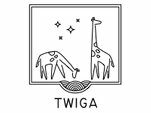At the end of 2019, TWIGA shipped 6 low-cost GPS stations to Uganda. These were deployed in and around Kampala by Makerere University, with the support of GReD, PoliMi, Makerere University, and TU Delft.
The purpose was to derive estimates of tropospheric Zenith Total Delay (ZTD), a parameter useful for meteorological applications.


The use of low-cost GNSS stations for meteorological applications requires the modeling of ionospheric errors. Although low-cost dual-frequency receivers are now available, the ones available in 2019 were still missing the L2 frequency and this prevents the availability of ionosphere-free observations. This second frequency can be predicted by exploiting dual-frequency data collected by pre-existent geodetic receivers, according to different techniques. Three different approaches (SEID by GFZ, ANGBAS by University of Rome La Sapienza, and goSEID by GReD), all suited for the Precise Point Positioning Strategy (PPP) adopted for the data processing, were used. A quality assessment of the three different algorithms for synthetic L2 observations reconstruction, evaluating the impact on the Zenith Total Delay estimation, was carried out. The data show a good agreement between the three methods, although the methodology implemented in goGPS software (goSEID) produced always better results. The reason can be found in the fact that this method is the result of a reasonable combination of the strengths of the two other methods (ANGBAS and SEID).
RELATED TWIGA SERVICE: EMERGENCY MANAGEMENT – EWS FOR HEAVY RAINS
Written by:
Alessandra Mascitelli (PoliMi) and Eugenio Realini (GReD)

